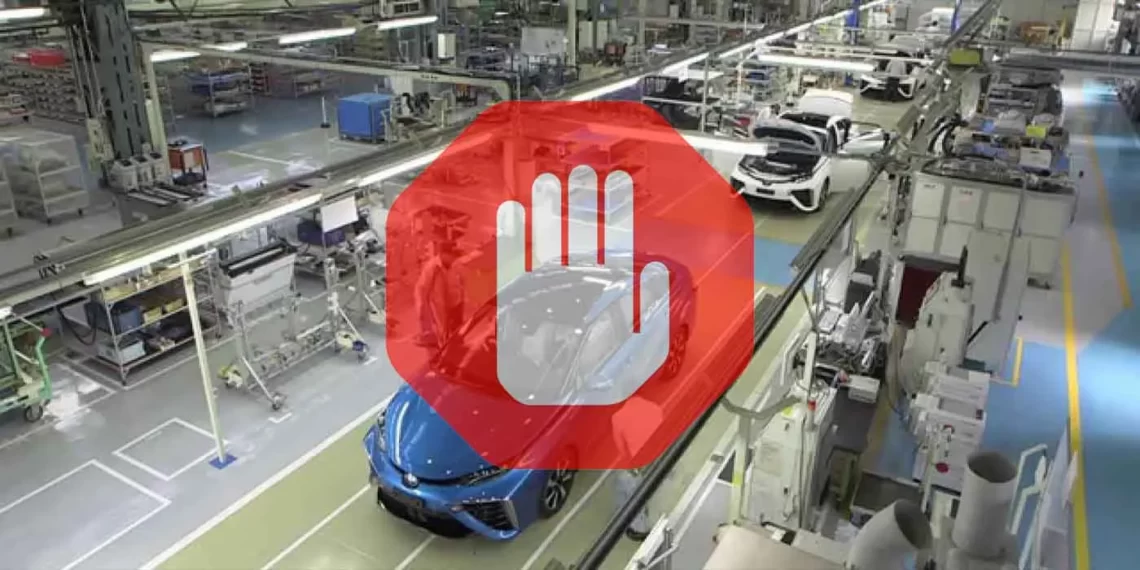Japanese motor industry giant Toyota has suspended operations at all of its assembly plants in its home country due to a glitch in its production system.
A spokesperson stated that the firm is trying to find the cause of the problem but does not currently believe it is due to a cyber-attack. Meanwhile, the move has brought domestic production at the world’s biggest-selling car maker to a standstill. The malfunction has meant the firm has not been able to order components.
Toyota has not yet said when it plans to restart the operations or how much production is expected to be lost due to the stoppage. In total, the 14 plants are estimated to account for around a third of Toyota’s global production.
The suspension comes as Toyota’s production in Japan had been recovering after a series of issues. Its operations were hit last year after one of its suppliers was affected by a cyber-attack. The one-day disruption caused an output loss of around 13,000 cars.
Toyota is a pioneer of the so-called “just-in-time” production system, which keeps costs down but can be vulnerable to problems if deliveries of components are disrupted.
Toyota’s domestic output was up 29% in the first half of this year, the first such increase in two years. Toyota makes a full range of vehicles in Japan from the budget Yaris to its most expensive models, including luxury Lexus brand cars.
Toyota’s production in Japan – about a third of its global output – averaged about 13,500 vehicles a day in the first half of the year, Reuters calculations showed. That excludes vehicles from group automakers Daihatsu and Hino.
Its average global vehicle sale price in the most recent quarter was equivalent to $26,384, based on its financial reporting. Using that as a proxy would mean a full-day of production at the 14 plants would be equivalent to $356 million in revenue.
Toyota’s Production and Supplier Management System
Toyota essentially invented modern auto assembly with its “kanban” system for notifying suppliers of what parts are needed where and when to minimize inventory.
“Kanban” means signboard in Japanese, and the Toyota engineer and later executive, Taichi Ono, who developed the system, drew inspiration from watching an American supermarket chain, Piggly Wiggly, manage its shelve stock on a trip to the United States in the 1950s.
Toyota’s system of lean production and just-in-time parts delivery has been adopted across the auto industry and widely studied. It shifted from a system of printed cards that managed supplier workflow to an internet-based “e-kanban” system more than 20 years ago.
Toyota’s kanban system, which relies on simple visual cues to organise workflow, has been adopted by other industries, including software development.
Koji Sato took over from Toyota Chairman Akio Toyoda as CEO in April. In the months since, even as the company looks to overhaul its approach to electric vehicles and related manufacturing challenges with an eye on U.S. EV leader Tesla (TSLA.O), it has also reported some embarrassing missteps.
In April, Toyota said affiliate Daihatsu has rigged part of the door in side-collision safety tests for some 88,000 small cars, most of which were sold under the Toyota brand.
In May, it said it had inadvertently exposed customer data on the Internet for more than 2 million Toyota owners because of an error in how it configured a cloud-based system it uses to track service.
READ ALSO: Zenith Bank Partners PAPSS to Enhance Cross-Border Trade for Ghanaian SMEs




















